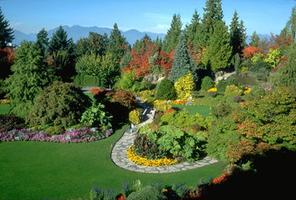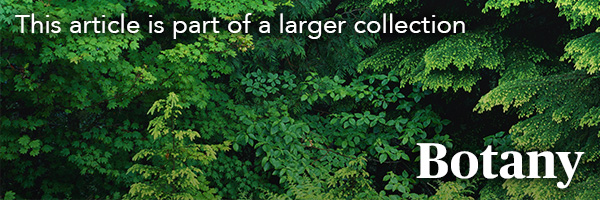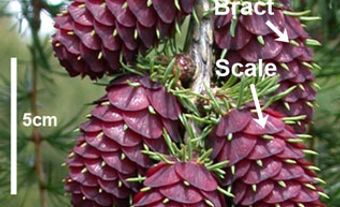Arboretum
A living collection of trees and often shrubs grown to illustrate diversity of species and forms is called an arboretum (Latin arbor, "tree"). Specimens are usually planted in groups reflecting botanical relationships or habitat preferences, in a manner producing a pleasing, parklike landscape. When an arboretum comprises mainly evergreen conifers, it is called a pinetum. There may be up to several thousand different kinds of woody plants, eg, rhododendrons, interspersed among trees.
Representative specimens are usually labelled with their common and scientific names, family name and the country of origin may appear as well. The parents of hybrids may also be indicated. Educational programs are often developed in conjunction with local schools and regional horticultural societies. Arboreta may stand alone or be part of a botanical garden.
First Arboreta
The first arboreta were probably the sacred groves of trees planted in the early days of older civilizations (China, Japan, Meditteranean countries, South America). Throughout Europe trees were planted, but in the beginning only for their timber and fruit, for medicinal and ornamental purposes, and to provide shelter for game animals. Although from the 16th century onwards both botanic gardens and private parks in Europe included many collections of trees, it was not until the 18th century that arboreta became widespread elements of landscape design.
A well-equipped arboretum has a library, herbarium and facilities for research. Alternatively, a relationship may be established with a nearby university or research station which has these facilities.
Main Functions
The main functions of an arboretum are to grow and to display effectively as large a selection of named woody plants as possible. Basic research involves discovering and recording characteristics, correct nomenclature, botanical relationships, origin, distribution, habitat requirements, economic importance and cultural uses of each kind of plant. Practical research includes testing for hardiness, studying methods of propagation, examining seed production and viability and carrying out breeding experiments to produce new and better varieties.
Introduction of plants brought back from expeditions to other parts of the world or obtained by exchange of seeds and propagating stock is an important function. Research programs and publications centre around the collections. Arboretums serve as information centres and to train students in horticulture and forestry.
The preservation of diverse plants as living specimens and worldwide exchange of seeds guarantees a material basis for the continuing search for new sources of fuel, food and medicine. Research results provide information to foresters, fruit growers, nursery staff, landscape architects, urban planners, park administrators and professional and amateur botanists and gardeners.
Arboreta in Canada
The Dominion Arboretum and Botanic Gardens in Ottawa dates from 1887; in 1889 the first planting of trees was made by the Department of Agriculture. Other botanical gardens and arboretums appeared more recently in Canada. The Jardin botanique, Montréal, and the Royal Botanical Gardens, Hamilton (established 1931 and 1941 respectively) both include arboretums. Morgan Arboretum, Macdonald College, Qué, containing woody plant species, is essentially a project in forest conservation and silviculture.
Several universities maintain arboretums on or near campus - eg, Guelph, Western Ontario, Laurentian, Alberta and UBC. Other arboretums include Ross Arboretum, Indian Head, Sask; Niagara Parks Botanical Gardens and School of Horticulture, Niagara Falls, Ont; Canada Research Centre Arboretum, Morden, Man; Van Dusen Botanical Garden, Queen Elizabeth Park, Vancouver, BC; Metropolitan Toronto Zoo; and a number of forest nursery stations in various provinces.

 Share on Facebook
Share on Facebook Share on X
Share on X Share by Email
Share by Email Share on Google Classroom
Share on Google Classroom





